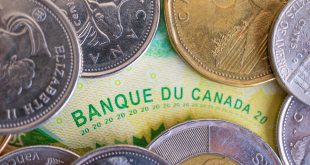Gold Retreats Amid De-escalation Signals
Gold prices slide below $3,400 on Monday, with XAU/USD at $3,383, down 1.45% earlier during the North American trading session from an eight-week high of $3,452. Yet, the yellow metal has later managed to edge up +0.33% and is trading at $3,396.77 at the time of writing.
Iran’s reported willingness to resume nuclear talks, per The Wall Street Journal, cools safe-haven demand, despite ongoing Israel-Iran hostilities following Israel’s June 13 airstrikes on Tehran’s nuclear and military sites. Conflicting statements from Iranian officials, denying de-escalation intent, sustain uncertainty. Risk appetite improves, pressuring gold, while markets await Federal Reserve Chair Jerome Powell’s June 18 policy decision, alongside Bank of Japan and Bank of England Governor Andrew Bailey’s announcements.
Geopolitical and Economic Context
Israel’s strikes, targeting Iranian facilities and officials, escalate Middle East tensions, though U.S. intelligence disputes claims of Iran’s imminent nuclear weapon capability. Stalled U.S.-Iran talks, halted by the conflict, shift focus to diplomacy as Tehran signals openness to negotiations. Geopolitical risks, including Russia-Ukraine stalemates, keep gold underpinned, but rising U.S. 10-year Treasury yields at 4.446%, up 3.5 basis points, and real yields at 2.166%, cap its advance. U.S. disinflation, with May’s Consumer Price Index at 2.4% and Producer Price Index at 0.1% monthly, below the 0.2% forecast, fuels expectations for Powell to cut rates by September, with fed funds at 4.25-4.5%. The U.S. Dollar Index dips 0.16% to 97.98, nearing a multi-year low of 97.60, supporting gold’s longer-term appeal.
Market Dynamics and Central Bank Watch
Gold’s retreat reflects improved risk sentiment, yet persistent buying by central banks like the People’s Bank of China signals sustained demand. A dovish Federal Reserve, hinted by weak U.S. inflation and an expected May retail sales contraction of -0.7%, could lift gold, as lower interest rates favor non-yielding assets. The Bank of England’s June 19 meeting, led by Bailey, draws scrutiny as UK inflation, projected at 4.6%, and a 0.3% GDP drop fuel rate cut speculation. U.S.-China trade progress, easing tech export controls, bolsters global markets, but President Donald Trump’s July 9 tariff deadline looms. Money markets price in 46 basis points of Fed easing by year-end, per Prime Market Terminal, keeping gold’s outlook cautiously bullish.
Technicals and Strategic Outlook
The XAU/USD uptrend holds, with gold maintaining higher highs and lows, despite dipping below $3,400. The Relative Strength Index, though bullish, trends toward neutrality, indicating fading buyer momentum. Support lies at $3,350, with resistance at $3,452, June’s peak. A break above could target $3,500. Investors should monitor U.S. retail sales, housing, and regional Fed business activity data on June 17, alongside Powell’s remarks.
Eurozone’s ZEW Economic Sentiment Survey, expected at 23.5, may influence risk flows. Diversifying with gold ETFs hedges against Middle East flare-ups, while overweighting U.S. financials and healthcare stocks balances portfolios. Gold’s dip signals a pause, not a reversal—geopolitical and monetary shifts demand nimble strategies to seize this volatile moment.
 Noor Trends News, Technical Analysis, Educational Tools and Recommendations
Noor Trends News, Technical Analysis, Educational Tools and Recommendations





